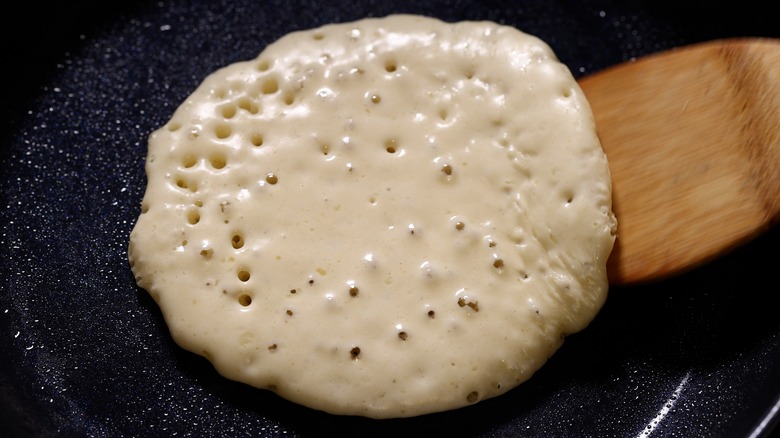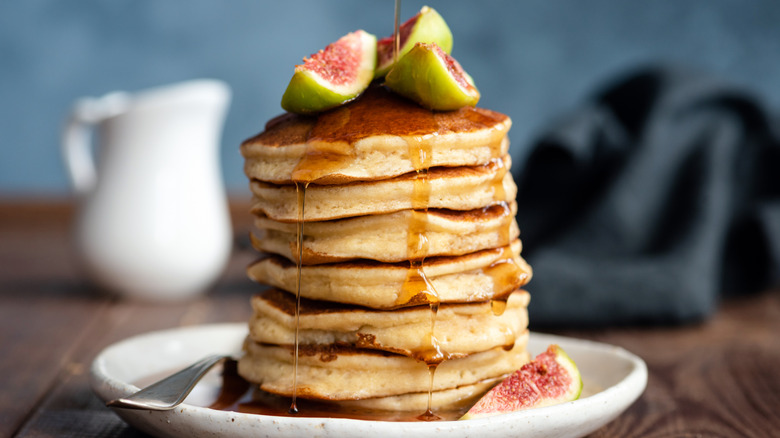How To Know When Your Pancake Batter Is Undermixed
There is a fine art to making the perfect homemade pancake. Though it can be challenging to get it just right, with a light hand and observant eye, anyone can achieve it. If you're consistently disappointed with how your pancakes turn out, you may need to make only one small adjustment when mixing the batter. There is a fine line between overmixing and undermixing, and it's much better to undermix pancake batter — once it's overmixed, there's no going back. Most chefs will advise you to leave your batter lumpy, but exactly how lumpy should it be? How can you tell if the batter is undermixed?
There is one key sign of an undermixed batter: visible streaks of dry ingredients. If you see clumps of dry flour as you stir, this means you should mix the batter a little bit more. Undermixing pancakes significantly changes the pancake's final look and texture: The pancakes can appear misshapen, and worst of all, have bites of dry flour throughout. However, the good news is that you're on the right track and you can put things right with just a couple more stirs. If you're undermixing the batter you probably know that the key to a good pancake is a lumpy texture. Your aim is not a perfectly smooth texture, so resist the urge to break up all those little lumps in your batter.
Crafting the perfect pancake
Another danger of undermixing your batter is that your leavening — likely baking powder, baking soda, or a mix of both, won't be thoroughly incorporated into the batter, which means the resulting texture will be uneven and you might be able to taste the bitterness of the leavening agents. One trick is to thoroughly mix the baking powder and/or soda with the flour before combining with the wet ingredients. Once you've achieved the perfectly-mixed batter, with an even color and lots of small evenly distributed lumps but no visible dry ingredients, let it rest for about 10 minutes. This will allow the moisture to penetrate all those little lumps.
Now that you know to look out for undermixed batter, be careful of overmixing. An overmixed batter will result in flat and chewy pancakes. Those lumps and bubbles you see are a sign that the leavening is working, and if you stir too long you risk knocking them all out of the batter. Overmixing also develops the gluten in the flour, creating a tough texture. The perfect pancake batter is lumpy but has no significant streaks of flour. This combination of lumps and air pockets increases the batter's viscosity and helps the pancakes remain tall and fluffy while they cook. Oh, and never press down on cooking pancakes, you'll ruin all your progress. If you follow these tips, you'll end up with an impressively fluffy stack of pancakes.

